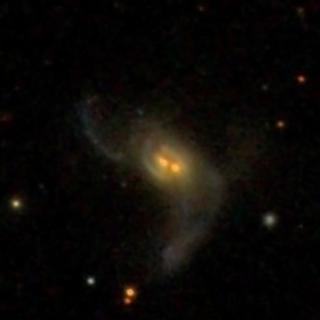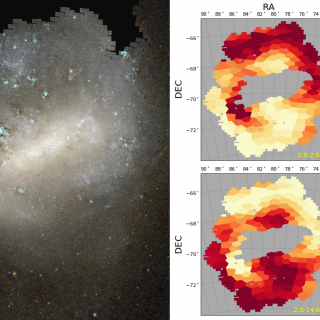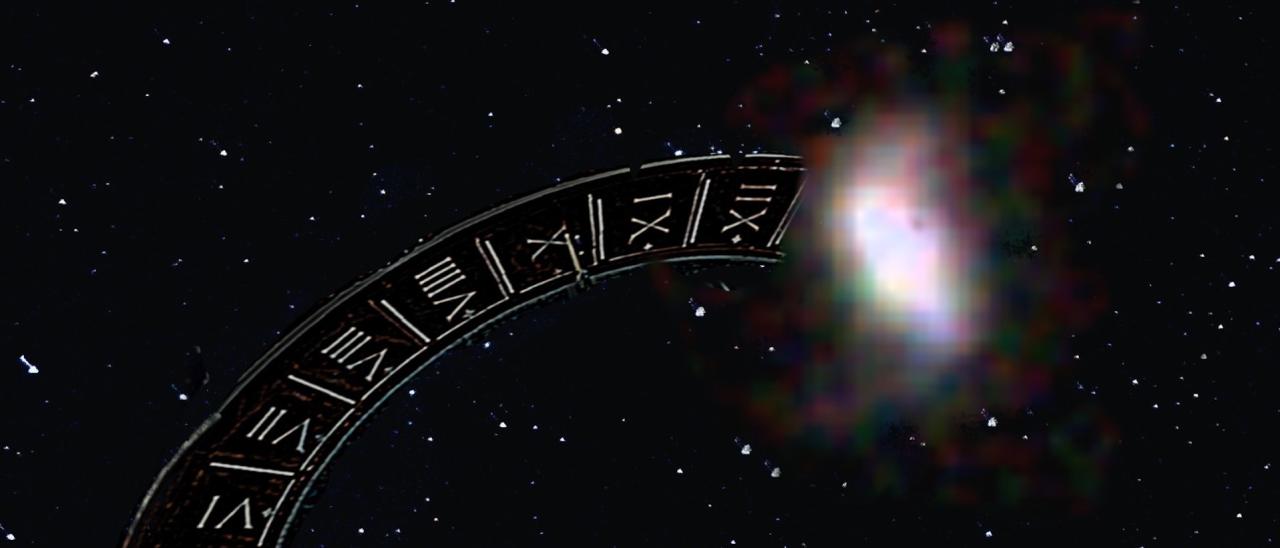An international team of scientists, with participation by researchers at the Instituto de Astrofísica de Canarias (IAC) and the University of La Laguna (ULL) have found a barred spiral galaxy, similar to the Milky Way, in the early universe, when it was only 15% as old as it is now. The galaxy, ceers-2112, is the most distant barred spiral observed, and its existence poses a challege to the current model of formation and evolution of galaxies. The discovery, made with the James Webb Space Telescope (JWST) is published in the journal Nature.
In astrophysics studying the structure of galaxies at different distances, which means at different epochs in cosmic evolution, is essential to help us understand the history of the formation and evolution of the Milky Way. In the nearby universe, more than half of the massive spiral galaxies show a long structure in the form of a bar in their central region, as indeed does our own Galaxy. These bars play an important role in the evolution of a galaxy, as they favour the mixing of the elements which is a feature of star formation.
However according to the predictions of many theoretical models, the physical and dynamical conditions in the early universe did not favour the formation of bars in those galaxies which formed early, and which are therefore most distant. So it was assumed that the structure of spiral galaxies such as the Milky Way was not consolidated until the universe had reached about one half of its age, which is measured as 13.800 million years.
Now a team led from the Centre of Astrobiology (CAB) CSIC-INTA has discovered a galaxy in the early universe which has a galactic bar similar to that of the Milky Way. The observations, taken with the JWST, show a barred spiral galaxy in the universe when it was only 2.100 million years old, which is a challenge to previous ideas about the formation of galaxies.
“Contrary to what was expected, this discovery shows that galaxies similar to the Milky Way existed as long ago as 11.700 million years, when the universe had only 15% of its current age” says Luca Constantin, a postdoctoral researcher in the CSIC at the CAB in Madrid, who is first author of the article.
This barred spiral galaxy, ceers-2112, has the same mass as the Milky Way must have had at that epoch. According to the scientific team, this observation leads to an important conclusion: “Surprisingly this finding shows that when the universe was still young, the evolution of this galaxy was dominated by baryons, the normal matter of which we are composed, and not by dark matter, even though the latter is more abundant” explains Jairo Méndez Abreu, a researcher at the ULL and the IAC, who is a co-author of the article.
A revolutionary telescope
Until now our knowledge of the morphology of distant galaxies was based mainly on studies carried out with the Hubble Space Telescope (HST) which showed very irregular structures, probably the results of mergers beween galaxies. However the exceptional capacity of the JWST is causing a revolution in astrophysics, and shows that the distante universe is not quite as we expected.
“For the first time with the James Webb we have the technology and the information we need to study in detail the morphology of very distant galaxies, so that in the next few years we can expect an unprecedented transformation in our knowledge of the processes in the formation and evolution of galaxies” stresses Marc Huertas-Company, an IAC and ULL researcher, who is another author of the article.
The bar of the galaxy ceers-2112 has been identified using the images taken with the NIRCam instrument on the JWST. The scientific data were taken during the observations in the project CEERS (Cosmic Evolution Early Release Science led by Steven L. Finkelstein of the University of Texa, USA) along the Extended Groth Strip, a region of the sky between the constellations of Ursa Major and Bootes. 33 researchers from 29 institutions in 8 countries have participated in this project.
Article: Costantin et al. "A Milky Way-like barred spiral galaxy at a redshift of 3", Nature, 2023. DOI: 10.1038/s41586-023-06636-x
Contacts at the IAC:
Jairo Méndez Abreu, jairo [at] iac.es (jairo[at]iac[dot]es)
Marc Huertas-Company, mhuertas [at] iac.es (mhuertas[at]iac[dot]es)







